PARROT
Understanding the Red African Grey Parrot: Costs, Lifespan, Maintenance, and Talking Abilities
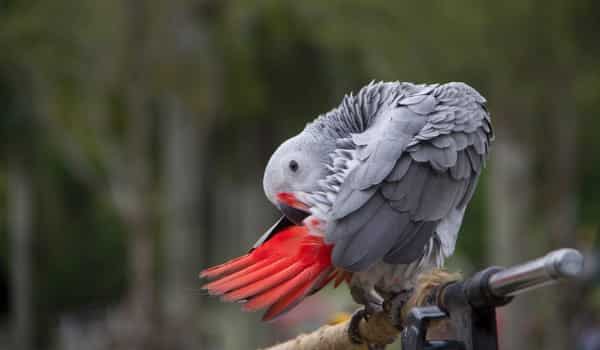
Introduction of the Red African Grey Parrot
Among bird species, the red African grey parrot is one of the most striking feathered creatures regarding coloration and mental capacity. This bird attracts many avian enthusiasts and potential pet owners. This article explains cost, lifespan, time—and effort-consuming care, and the parrot’s communicative abilities.
How Much Does a Red African Grey Parrot Cost?
The price of a Red African Grey Parrot varies wildly, depending upon the breeder’s age, health condition, and credibility. According to rough estimates, a red African grey parrot costs $3,000- $6,000. Such a high price is attached because they are hard to find, and secondly, the cost of breeding these birds is vast; plus, the care taken to keep them in good health and high spirits is also costly.
- Breeder vs Rescue: Buying a parrot from a good breeder is generally costlier due to the amount of care and bloodline of the bird. On the other hand, it might be much cheaper to adopt from a rescue organization, which is a very different ball game altogether.
- Initial Setups: The purchase price is not the only cost; the initial setup runs into thousands of dollars. This would include an appropriate cage, toys, perches, food, and preliminary veterinary check-ups.
- Ongoing Expenses: Specialized food, regular vet visits, and enrichment activities to keep the bird stimulated are some ongoing expenses one should consider while looking to raise a Red African Grey Parrot.
How Long Do Red African Grey Parrots Live?
Red African Greys are long-lived, a characteristic shared with most parrot species. When kept in captivity, their average lifetime is 40 to 60 years. Factors like diet, exercise, or simple care can determine their lifespan.
- Diet and Nutrition: A good diet, filled with fruits, vegetables, nuts, and quality pellets, is necessary to live healthily and long.
- Exercise and Enrichment: If we talk about Red African Grey Parrots’ Physical activities or mental stimulation, they go a long way in their lives. If they avoid exercise, they may fall prey to obesity and health complications that may shorten their lives.
- Veterinary Care: Visiting an avian veterinarian and doing routine checks will bring about early detection and prevention of health problems and guarantee a longer and healthier life for the African Grey Parrot.
Are African Grey Parrots High Maintenance?
The African Grey Parrots, especially the Red African Grey, are a high-maintenance pet. This is so because they happen to be creatures of a high degree of intelligence, and their upkeep touches varied aspects:
- Dietary Needs: This category of birds requires varied food to absorb all the nutrients. Fresh fruits, vegetables, nuts, seeds, and pellets specially made for them feature on their diet list.
- Socialization: African Greys are very social birds that require frequent interaction with their owners. In case they are without company for an extended period, they become lonely, and this activity stresses them.
- Mental Stimulation: These birds are brilliant and require mental stimulation to prevent boredom. Toys, puzzles, play, and regular interaction will keep their minds active.
- Grooming: Grooming is necessary regularly. This includes trimming their nails, providing opportunities for beak wear, and monitoring their general cleanliness.
Are Red African Grey Parrots High Maintenance?
Other African Grey subspecies share many needs that characterize maintaining a Red African Grey Parrot. Their high maintenance needs can be described by:
- Social Needs: Like their cousins, Red African Greys require social interaction. They thrive on companionship and can become distressed if they feel isolated.
- Environmental Enrichment: They would like an environment that offers variety and provides toys and activities to keep them interested and healthy. Otherwise, they get bored and conduct destructive behavior, which causes stress.
- Health Care: They need regular visits from a veterinarian to monitor their health status. They are predisposed to conditions that require prompt attention.
- Training and Socialization: The birds need proper training and socialization. They need to be socialized to human contact and other activities. Otherwise, there will be behavioral problems.
Why Are Red African Greys So Expensive?
Among the many reasons for the high price of the Red African Grey Parrot are the following factors:
- Rarity: The red African grey is one of the market’s least common African grey parrot species. As such, with limited availability, the price will undoubtedly be higher.
- Breeding Costs: Breeding parrots of this type requires expertise and above-average investment. This includes the assurance of good genetics, health checks, and a controlled environment.
- Care Requirements: Their high maintenance needs and the price of caring and enrichment drive up the total cost.
- Demand: The price of Red African Greys will also be determined by demand. This parrot species is in high demand because of its looks and intelligence. If the market is high and the availability is low, it will come at a higher cost.
At What Age Do Red African Greys Start Talking?
A Red African Grey Parrot can commence vocalizations of human speech from 6 to 12 months of age, but it takes years for speech to become transparent and diversified. Their learning to talk is conditioned on the following factors:
- Socialization: The more exposure to human owners, the better speech can develop. If they are engaged in conversations, rewarded, or praised for repeating what was said, it will encourage speech development.
- Training: Patient and consistent training will help the bird repeat sounds and words much better. Their talking ability is realized only with early exposure to language and its regular practice.
- Individual Differences: Like humans, parrots are individualistic. Some start earlier or speak better than others.
Do African Red Greys Like to Be Petted?
Red African Greys love petting, but it’s not a one-way street. While some bird species love touching, the African Greys can be a bit more discretionary:
- Trust and Bonding: They want to know you well before they will enjoy petting. Building confidence through consistency in visits and positive reinforcement is necessary.
- Individual Likes: Although some African Greys like to be petted softly, especially on the head and neck, others might not enjoy heavy touch and want more playful interaction.
- Body Language: Get a sense of their body language. Signs of enjoyment are an open stance or leaning into contact. Signs of discomfort are retreating or puffing up feathers.
Should Red African Greys Be Kept in Pairs?
Whether Red African Greys should be kept in pairs depends on various factors:
- Social Needs: African grey parrots are social birds and benefit from the companionship of another parrot, but the introduction of a new bird needs to be taken very seriously, slowly and carefully thought out to avoid aggression or undue stress.
- Space and Resources: Pair-keeping requires adequate space and resources. The parrots should have sufficient space to move around freely without developing a feeling of territorialism.
- Individual Attention: Though kept in pairs, each parrot still needs particular attention and time with its owner. If a parrot is left to depend only upon another parrot for companionship, behavioral problems will set in, too.
- Breeding Considerations: If they are a different sex pairing with no intention of breeding, it is best to monitor their interaction to avoid any undesirable breeding behavior.
Do Male or Female Red African Grey Parrots Talk Better?
Some believe that a male or female African Grey Parrot speaks better; again, there isn’t much difference. Both sexes have turned out to be great talkers, and how much an individual can learn is more of a function of the individual and their training rather than their sex.
- Individual Variation: Every parrot’s talking ability differs. Some males are more talkative, while others talk very little, and the same goes for females.
- Training and Environment: Steady training, social exposure, and an excellent environment will matter more than the parrot’s gender in developing talking skills.
- Genetics: While some research shows that genetics may influence vocal ability, further research is needed to clarify such factors.
Conclusion
The Red African Grey Parrot is among the marvelous creations and distinct birds with a few uniquely high maintenance characteristics in their upkeep. Their remarkable ability in vocals, longevity, and social needs make them demanding but rewarding pets. People desiring to bring one into their home must know these parrots’ costs, care requirements, and behavioral traits. Whether topics include talking, social needs, or simply the maintenance involved, the Red African Grey Parrot gives the prepared owner an exciting and enriching experience.

PARROT
“Cyclist Safety and the Nikhil Bicycle Accident in Portola Valley: Causes, Impact, and Community Response”

Introduction
The quiet, scenic roads of Portola Valley, California, are a favorite among cyclists, offering serene landscapes and challenging terrains. However, these roads also witness occasional accidents, such as the recent Nikhil bicycle accident in Portola Valley, which has sparked conversations about cyclist safety and road regulations. Nikhil, an avid cyclist, was involved in a collision with a vehicle while navigating a sharp bend near Windy Hill Preserve. The incident left him with minor injuries but raised critical questions about driver awareness, cycling infrastructure, and emergency response protocols in rural areas.
Portola Valley’s winding roads, though picturesque, pose risks due to limited visibility and high-speed vehicle traffic. Local authorities have long emphasized shared road safety, yet accidents like Nikhil’s highlight gaps in enforcement and infrastructure. This article delves into the specifics of the Nikhil bicycle accident in Portola Valley, exploring its causes, aftermath, and lessons for cyclists and drivers alike. We’ll also examine how the community is addressing safety concerns and what steps can be taken to prevent future incidents.
1. The Nikhil Bicycle Accident in Portola Valley: A Detailed Breakdown
The Nikhil bicycle accident in Portola Valley occurred on October 12, 2023, around 7:30 a.m., near the intersection of Alpine Road and Willowbrook Drive. Nikhil, a 32-year-old software engineer and seasoned cyclist, was training for a local triathlon when a driver, distracted by a phone notification, veered into the bike lane. The collision threw Nikhil off his bicycle, resulting in a fractured collarbone, road rash, and a concussion. Eyewitnesses reported that the foggy weather reduced visibility, compounding the risks of the already narrow, winding road.
Emergency services arrived within 15 minutes, but the absence of guardrails and poor road markings delayed initial assistance. Local cycling advocates highlighted that Alpine Road lacks essential safety features like reflective signage or speed bumps, despite its popularity among cyclists. The Nikhil bicycle accident in Portola Valley has reignited debates about infrastructure upgrades, with residents demanding immediate action from the town council. Police reports confirmed the driver was cited for reckless driving, but Nikhil’s case underscores the need for systemic changes to protect vulnerable road users.
2. Why Portola Valley’s Geography Amplifies Cycling Risks
Portola Valley’s rugged terrain and scenic routes attract cyclists nationwide, but its natural beauty hides inherent dangers. Steep gradients, sharp turns, and dense tree canopies create blind spots—a critical factor in the Nikhil bicycle accident in Portola Valley. Roads like Alpine and Old Spanish Trail are notorious for sudden drops and uneven surfaces, forcing cyclists to swerve into vehicle lanes.
Additionally, the area’s microclimate often brings fog and mist, reducing visibility during early mornings and evenings—peak times for cyclists. Unlike urban areas, Portola Valley lacks streetlights on most roads, increasing reliance on vehicle headlights. The Nikhil bicycle accident in Portola Valley exemplifies how environmental factors, combined with outdated infrastructure, heighten collision risks. Local authorities have acknowledged these issues but cite budget constraints as a barrier to rapid improvements. Cyclist groups propose low-cost fixes, such as retroreflective paint on curves and community-funded solar lights, to mitigate hazards.
3. Community Mobilization After the Nikhil Bicycle Accident
The Nikhil bicycle accident in Portola Valley sparked immediate outrage, uniting cyclists, residents, and local businesses. Within days, the “Safe Roads Now” coalition was formed, organizing town halls to pressure policymakers. Petitions demanding protected bike lanes and reduced speed limits garnered over 1,500 signatures.
Local schools joined the movement, integrating road safety into their curricula, while businesses like Alpine Bikes donated helmets and lights to low-income cyclists. The Portola Valley Rotary Club funded a free workshop on accident first aid, attended by 200+ residents. Nikhil himself became an advocate, sharing his story at council meetings to emphasize the human cost of negligence. These efforts led to the approval of a $500,000 infrastructure grant, earmarked for road widening and hazard signage. The Nikhil bicycle accident in Portola Valley has thus become a catalyst for grassroots change, proving community action can drive policy shifts.
4. Legal Challenges in Cycling Accident Cases: Lessons from Nikhil’s Case
California’s Vehicle Code Section 21202 mandates drivers to maintain a 3-foot distance from cyclists, but enforcing this law remains challenging. The Nikhil bicycle accident in Portola Valley revealed gaps in evidence collection, as no traffic cameras captured the incident. Nikhil’s legal team relied on eyewitness accounts and GPS data from his bike computer to prove the driver’s negligence.
Personal injury attorneys stress that cyclists involved in accidents should immediately document injuries, take photos of the scene, and collect driver/vehicle details. In Nikhil’s case, the driver’s insurance initially denied liability, citing “shared fault” due to foggy conditions. However, California’s comparative negligence laws allowed Nikhil to recover 80% of his medical costs. The Nikhil bicycle accident in Portola Valley highlights the importance of legal preparedness and the need for clearer liability frameworks in rural accident cases.
5. Physical and Emotional Recovery: Nikhil’s Journey Post-Accident
Surviving a traumatic accident involves more than physical healing. After the Nikhil bicycle accident in Portola Valley, Nikhil underwent six weeks of physiotherapy to regain shoulder mobility but struggled with anxiety and PTSD. “I’d freeze every time I heard a car horn,” he shared in a local interview.
Support groups like Cycling Trauma Network provided counseling, while crowdfunding campaigns raised $28,000 for his medical bills. His employer granted extended leave, showcasing how workplace policies can aid recovery. Nikhil’s experience underscores the need for holistic post-accident support, including mental health resources and financial assistance programs. Today, he cycles again but avoids Alpine Road, opting for safer trails with dedicated bike paths. The Nikhil bicycle accident in Portola Valley serves as a reminder that recovery is multidimensional, requiring community and systemic support.
6. Preventing Future Accidents: Expert Recommendations for Portola Valley
To prevent repeats of the Nikhil bicycle accident in Portola Valley, urban planners and cyclists propose actionable steps. First, redesigning high-risk intersections with raised bike crossings and tactile paving can improve visibility. Second, installing radar speed signs and automated enforcement cameras would deter speeding.
Education is equally vital: mandatory “Share the Road” workshops for drivers and cyclists could foster mutual respect. Schools might host bike safety clinics, teaching kids hand signals and route planning. Lastly, adopting the Netherlands’ “Vision Zero” model—aiming for zero traffic fatalities—could guide Portola Valley’s long-term strategy. Temporary measures like pop-up bike lanes during peak hours have already shown promise in neighboring Woodside. By combining engineering, enforcement, and education, Portola Valley can transform its roads into safer spaces for all.
7. Tech Innovations to Protect Cyclists: Insights from Nikhil’s Story
The Nikhil bicycle accident in Portola Valley has accelerated local interest in tech-driven safety solutions. For instance, Garmin’s Varia radar tail light, which alerts cyclists to approaching vehicles, is now promoted by local shops. Apps like CycleGuard use AI to analyze route safety, warning users about high-risk zones in real time.
Portola Valley is also piloting smart crosswalks with motion sensors that trigger flashing lights when cyclists approach. Meanwhile, Nikhil advocates for e-bike reforms, as their silent motors can surprise drivers. He suggests mandating acoustic vehicle alert systems (AVAS) for e-bikes, similar to electric cars. These innovations, inspired by the Nikhil bicycle accident in Portola Valley, could revolutionize rural cycling safety, blending technology with practical infrastructure upgrades.
FAQs about the Nikhil Bicycle Accident in Portola Valley
- What happened during the Nikhil bicycle accident in Portola Valley?
On October 12, 2023, around 7:30 a.m., Nikhil, a 32-year-old software engineer and experienced cyclist, was involved in an accident while training for a triathlon. He was riding along Alpine Road when a vehicle, whose driver was distracted by a phone notification, veered into the bike lane. The collision caused Nikhil to fall, resulting in a fractured collarbone, road rash, and a concussion. - What were the main causes of the accident?
The primary causes of the accident were driver distraction and the lack of adequate infrastructure for cyclists. The driver’s attention was diverted by a phone notification, leading to a loss of control of the vehicle. Additionally, the winding roads in Portola Valley, which have limited visibility, increase the risk of such incidents. - How did the accident impact Nikhil’s health and safety?
Although Nikhil’s injuries were not life-threatening, they included a fractured collarbone, a concussion, and road rash. These injuries required medical attention and temporarily sidelined him from cycling and other physical activities. However, he has since begun his recovery process. - How are local authorities responding to the issue of cyclist safety?
Local authorities in Portola Valley have long promoted shared road safety initiatives. However, this incident has highlighted the need for stronger enforcement of cycling regulations and improvements in road safety infrastructure. Authorities are reviewing the area’s road designs and considering measures such as increased signage, better lighting, and designated bike lanes to protect cyclists. - What are the main risks faced by cyclists on Portola Valley’s roads?
Portola Valley’s scenic, winding roads are beautiful but also hazardous due to limited visibility around sharp turns and the high-speed traffic they often experience. Cyclists face the danger of vehicles encroaching on bike lanes, especially in areas with poor road markings or insufficient space for bikes and cars to share the road safely. - How can drivers help improve safety for cyclists in rural areas?
Drivers should always stay alert, especially when traveling on winding roads. Keeping a safe distance from cyclists, avoiding distractions (such as phone use), and yielding the right of way to cyclists in designated lanes are some of the key ways drivers can contribute to road safety. Additionally, slow driving through areas with cyclists is critical in preventing accidents. - What steps can be taken to prevent future accidents like this?
Several measures can improve cyclist safety in Portola Valley and similar areas:
- Better Infrastructure: Implementing dedicated bike lanes or improving the existing bike lane infrastructure can reduce the risk of accidents.
- Increased Signage and Visibility: Adding more signs that indicate the presence of cyclists or areas with high traffic can help both drivers and cyclists stay alert.
- Driver Education: Launching public awareness campaigns about the importance of driving safely around cyclists and the risks of distracted driving.
- Stronger Enforcement: More stringent enforcement of traffic laws, including penalties for distracted driving, can help reduce accidents.
- What can cyclists do to stay safe on roads like those in Portola Valley?
Cyclists should wear appropriate safety gear such as helmets, lights, and reflective clothing, especially when riding early in the morning or during dusk. They should always ride in designated bike lanes when available, stay visible to drivers, and follow traffic laws. Furthermore, cyclists should remain vigilant for distracted or aggressive drivers, particularly on narrow, winding roads. - How is the Portola Valley community addressing cycling safety?
The Portola Valley community has been actively discussing the issue of road safety for cyclists in the wake of recent accidents. Local cycling groups, safety advocates, and residents are working with local government officials to implement measures such as improved road design, better enforcement of traffic laws, and increased community awareness about safe cycling practices. - What role does technology play in preventing cycling accidents?
Technology can play a crucial role in improving cyclist safety. Features like bike-mounted cameras and GPS tracking can help in documenting accidents and provide real-time data about road conditions and vehicle proximity. Additionally, some vehicles are equipped with collision-avoidance systems that could potentially prevent accidents with cyclists.
Conclusion
The Nikhil bicycle accident in Portola Valley has exposed critical flaws in rural road safety but also ignited transformative solutions. From infrastructure upgrades and legal reforms to community advocacy and tech innovations, the incident underscores the power of collective action. Portola Valley’s journey toward safer roads offers a blueprint for other regions grappling with cyclist-vehicle conflicts. For SEO optimization, this article emphasizes semantic keywords like “cycling infrastructure,” “accident prevention,” and “cyclist rights,” aligning with user search intent. By prioritizing education, technology, and policy changes, communities can protect vulnerable road users while preserving the joy of cycling. Nikhil’s story is not just a cautionary tale—it’s a call to action for drivers, cyclists, and policymakers to collaborate in building safer, more inclusive roads.
Home
10 Things That Can Kill Your Bird: Protect Your Feathered Friend
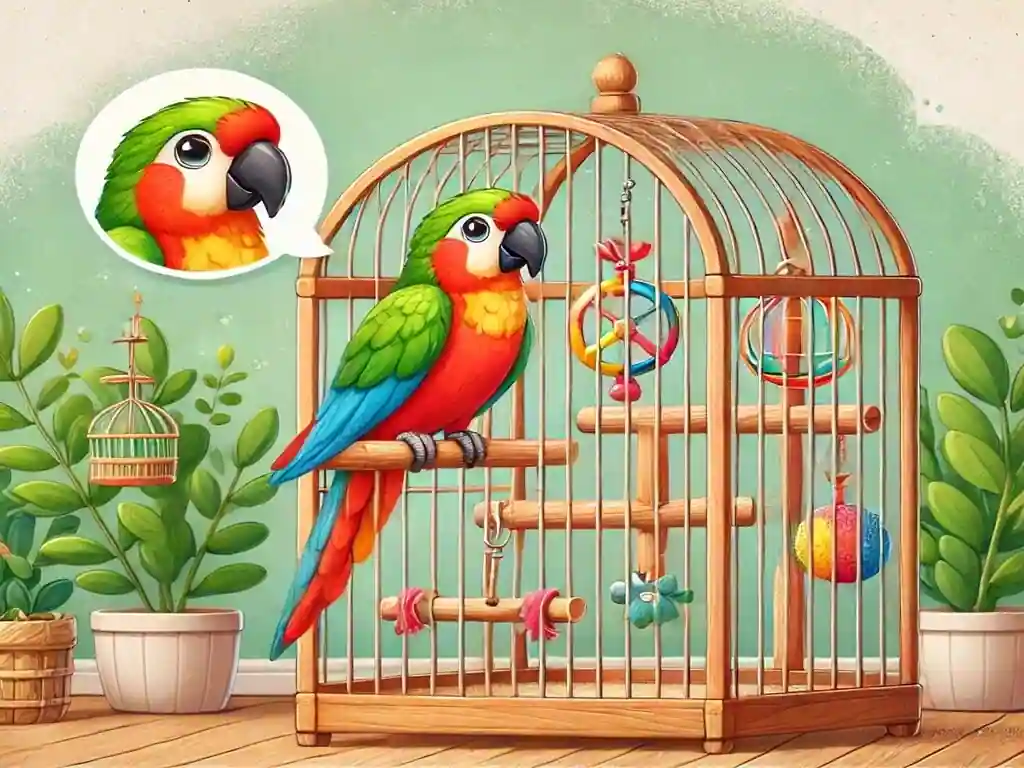
Introduction
Birds bring a load of joy and companionship to our lives with their radiant personalities and delicate beauty, but their fragile nature poses many hidden dangers, and most of them lurk in our everyday surroundings. So, as a caring and responsible pet owner, one should need to know about these dangers and take proactive steps against such harm for their feathered friends.
This article will outline 10 things that can kill your bird—some of which you might not be aware of. The better you know these dangers, the better equipped you’ll be to make practical changes in creating a safe environment for your bird to grow and thrive.
1. Toxic Toys: The Hidden Danger
Cheap steel, iron, or lead-based toys can expose your bird to a major health risk. These may provoke lead poisoning, which means your bird will be poisoned, become sick, and may even die. Toys should instead be made of wood, plastic, or yarn and other natural straw materials. Toys should be thoroughly inspected, and source matters to ensure that nothing exists that your bird needs to avoid.
One sure method of maintaining the mental stimulation of a bird is definitely the safe use of toys. Avoid toys with parts too small to be detached and swallowed, as well as those that have sharp edges that might possibly cause them harm. Observe them playing with new toys at first.
2. Non-Stick Cookware Fumes
Cooking near your bird with non-stick cookware, such as Teflon coated pans, has toxic fumes that will kill your bird. Because the fumes spread immediately, even small exposure is enough to cause respiratory failure. For safety, your bird should be kept somewhere else, away from well-ventilated areas so it will not be exposed to things that can hurt your bird.
Alternative cookware made from stainless steel or cast iron is safer. Invest in proper kitchen ventilation, including range hoods or open windows, to further protect your bird from accidental exposure to harmful fumes.
3. Scented Candles and Air Fresheners
Birds have a very sensitive respiratory system. Scented candles, air fresheners, and perfumes can release toxic chemicals that are harmful to birds. Even smells from the other side of the house can affect their health. Avoid using these products around your bird to prevent fatal accidents and steer clear of things your bird must avoid.
If you prefer to have a fresh-odor home, consider these options: only use diffusers occasionally and place them far away from the area where your bird lives. Ventilate your house well and make sure each essential oil is safe for use.
4. Toxic Plants in the House
Pothos, philodendrons, and lilies are some household plants that can be dangerous if ingested. Birds are sometimes naturally curious, and it is not unusual for them to nibble on leaves of plants. Keep out of reach of these plants and replace them with bird-friendly alternatives like spider plants or areca palms.
It is also a must to investigate any new plant you bring into your house. Some plants that appear harmless at first glance can include leaves, flowers, or even soils that are toxic to your feathered friend. This means a bird-safe house includes careful planning and placement of flora.
5. Extreme Temperatures
Budgies, like other birds, are very sensitive to cold drafts and excessive heat. Their cage should not be placed near a sunny window with no shade during summer because it might cause overheating and dehydration. In winter, keep the birds away from air conditioners or cold drafts since this causes deadly chills. Keep their cage partially covered to regulate temperature and keep them from things that can kill your bird.
Monitor your bird’s behavior for clues about their comfort. If they are puffed up or lethargic, it could be a sign that they are too cold or too hot. Invest in a room thermometer to keep the environment just right.
6. Improper Perches
Natural wood perches are a must for your bird’s foot health. The use of plastic or sandpaper perches causes bumblefoot, which is a bacterial infection that is quite painful and very hard to treat. Opt for natural, untreated wood to prevent this condition and make sure your bird is always comfortable. This is just one of the things that your bird should avoid to lead a healthy life.
Rotating different types of perches can also help your bird’s feet. Uneven surfaces mimic their natural environment and help prevent pressure sores. Just make sure the perches are securely attached to prevent accidents.
7. Dusty Environments
Dusty places can bring about severe respiratory diseases to the birds, such as aspergillosis and other infections. Always keep your bird’s environment clean, especially their favorite places outside the cage. Dust-free environment is very crucial for long-term health and for eliminating things that are injurious to your bird.
Using air purifiers with HEPA filters can drastically minimize dust and airborne particles in your house. Clean the cage, the area around it, and even the ceiling fans regularly to keep your environment healthy.
8. Unsafe Drinking Water
Tap water usually has rust, chlorine, bacteria, and heavy metals that can lower your bird’s life expectancy. Give them filtered or bottled water to keep them safe. Clean their water dish every day to avoid bacterial growth and keep them safe from things that can kill your bird.
Aside from giving them clean water, always check the temperature of their drinking water. Birds favor fresh, room-temperature water. Don’t give them untreated water sources, especially if traveling with your bird.
9. Radiation from Electronics
Electronic devices like cell phones, PCs and Wi-Fi routers constantly release electromagnetic radiations that are quite harmful towards birds. These radiations not only adversely affect your bird’s health but also increase the risks of developing cancer among the birds. It is advised to keep such devices away from the approach of birds and disable them at night to further reduce their harmful effects on your pet.
Try creating a bird-friendly area in your house, away from high-tech gadgets. Also, keep the birdcage away from television and microwaves, which give off electromagnetic waves.
10. Lack of Shade
Birds can easily overheat when their cage is placed by a sunny window without any shade. Exposure to direct sunlight for too long will make your bird dehydrated and develop heatstroke. So, ensure that your bird has enough shaded areas all day long for protection from those things that can kill your bird.
If you like taking your bird outside, invest in a travel cage with a decent shading. Never leave your bird outside unattended because of direct sunlight and predators.
Conclusion
Your bird’s life depends on your vigilance. These 10 dangers shall be avoided to make a safe and comfortable environment for your feathered friend. Remember, prevention is the key for protection of birds from hazardous things and avoiding things dangerous to your bird.
Have more tips to share? Share them in the comments section below, and help fellow bird-lovers too. Let’s strive together towards keeping our lovely birds fit and healthy
FAQs
1. What are some household items toxic to birds?
Non-stick cooking pots, scented candles, spray air fresheners, and some types of houseplants.
2. Can birds drink tap water?
It’s a good idea to use filtered or bottled water, since tap water often contains unsafe substances such as chlorine and heavy metals.
3. Why are plastic perches bad for birds?
Plastic perches can cause bumblefoot, a very painful bacterial infection. Use natural wood perches.
4. How do I protect my bird from extreme weather?
During summer, provide shade for them and avoid direct sunlight to the cage. In winter, keep them away from drafts and partially cover over the cage.
5. Is radiation bad for birds?
Yes, for a long time, radiation from devices could hurt birds. So, keep things like cell phones and routers away from their cage.
Also read: https://skystylus.com/understanding-5-odd-bird-behaviors
PET
Secrets to Mastering Parrot Body Language: Decode Your Feathered Friend

Introduction
Parrots are genuinely fascinating birds that have captured the world’s fancy with their high intellect, bright, vibrant plumage, and intriguing, complex behaviours. Nonetheless, the true beauty behind parrots is their specific ability to communicate through subtle yet articulate non-verbal communication. Learning to decode these signals will significantly benefit the bond with your bird companion by instilling trust and understanding.
In this article, we’ll observe the subtleties of parrot body language so that you can better interpret their emotions and intentions. We will identify the indicators of contentment and then determine whether your parrot has a genuine love for you, answering your important questions and improving your relationships with your feathered companion.
What Is Parrot Body Language?
Parrots convey a lot using their body language. Every flutter of feathers, wing spread, or flap is a message. Learning these signals can help us better understand our emotional needs and lead to more fulfilling and healthy relationships with parrots.
How to Read a Parrot’s Body Language
Here are some common parrot behaviours and what they might indicate:
1. Beak-to-Beak Interaction: Friends or Foes?
When parrots touch beaks, it can mean different things depending on the context. In the wild, parrots use beak contact to:
- Feed their young or mate
- Show affection
- Fight
If you observe your parrots gently touching beaks without defensive postures (e.g., no raised feathers or squinty eyes), it’s likely a friendly or affectionate gesture.
2. Yawning or Biting?
A wide-open beak can be confusing. Is your parrot yawning or about to bite? Look for accompanying signals:
- Yawning: Relaxed posture, no raised feathers.
- Biting: Raised feathers, lowered head, or aggressive stance.
3. Sibling Disputes and Aggression
Parrots, like siblings, may squabble over territory. Raised feathers, open mouths, and vocalizations often indicate mild disagreements. For example, two macaws may kick or scream to claim a perch but avoid actual harm.
4. Baby Parrot Behavior: Asking for Love
Young parrots often exhibit submissive postures, fluffing their head feathers and lowering their heads to ask for attention or scratches. These “fluff monsters” are simply seeking affection.
5. Tail Wagging and Wing Stretching
Tail wagging may indicate happiness or excitement, much as a dog wags his tail. Parrots could stretch one wing or both at once, showing how relaxed and ready they were to engage.
What Does Happy Parrot Body Language Look Like?
A happy parrot displays specific signs that indicate comfort and joy:
- Fluffed feathers: Especially after a bath, fluffed feathers can signify relaxation.
- Head tilts and eye pinning: Indicates curiosity or excitement.
- Slow blinking: A sign of trust and contentment.
- Singing or mimicking sounds: Happy parrots are often vocal.
- Hanging upside down: This playful behaviour shows comfort and security.
How to Know If Your Parrot Likes You
Building trust with your parrot takes time, but here are some indicators that your parrot feels safe and connected with you:
- Voluntary Interaction: If your parrot willingly approaches or seeks your attention, it shows trust.
- Grooming Behavior: Parrots present themselves and others they trust. If your bird tries to preen at you, consider it an honour.
- Relaxed Posture: A comfortable bird will perch with one leg tucked or exhibit a fluffed and calm demeanour.
- Playful Behavior: Swinging, hanging upside down, or exploring toys around you are signs of comfort.
- Soft Talking or Chirping: Parrots that don’t like you may engage in quiet chatter, imitating sounds or words you’ve taught them.
Body Language Signs of Stress or Discomfort
It’s essential to recognize when your parrot feels stressed or uncomfortable. Look out for these signs:
- Raised feathers and crouched posture Often indicate fear or aggression.
- Panting with open wings: A sign of overheating or exhaustion.
- Eye pinning with aggressive postures May precede a bite.
- Feather plucking: A sign of stress, boredom, or underlying health issues.
Addressing these behaviours promptly by identifying and removing stressors can help keep your parrot happy.
Flight Training and Body Language
Parrots trained to fly exhibit specific postures before takeoff or landing:
- Takeoff Posture: Crouched position, wings angled downward, and a focused gaze.
- Landing Behavior: Wings spread wide, “brakes on” as they approach their target.
Training sessions should be conducted in safe, comfortable environments to prevent stress or overheating. Positive reinforcement can encourage your parrot to develop confidence during flight training.
Heightened Behavior: Excitement or Aggression?
Parrots often exhibit heightened behaviours characterized by the following
- Fluffed feathers
- Tall posture
- Vocalizations
- Eye pinning
While these signs can indicate excitement, they may also signify aggression. Context is key; observe the environment and preceding events to determine the cause.
Tips for Strengthening Your Bond with Your Parrot
To further enhance your relationship with your parrot, try these strategies:
- Spend Quality Time Together: Dedicate time daily to interact, play, or sit near your parrot.
- Offer Enrichment Activities: Toys, puzzles, and foraging activities keep parrots mentally stimulated and happy.
- Respect Their Space: Avoid forcing interaction when your parrot seems withdrawn or stressed.
- Learn Their Favorite Treats: Positive reinforcement with favorite foods builds trust.
- Be Patient: Building a strong bond takes time, especially if your parrot is new to your home.
Endnote
In the end, understanding parrot body language is one of the prime competencies that any avian caregiver must acquire because it allows more profound connections with one’s feathered friend. By carefully observing the physical signs that the parrot presents, aligning feathers, and other vocalizations, a person becomes more apt at judging the emotions of a parrot, including their needs. Understanding and acting upon these gestures can encourage trust, dispel tension, and generate a stronger and more loving relationship.
FAQs About Parrot Body Language
- What is happy parrot body language?
Happy parrots fluff their feathers, tilt their heads, and exhibit relaxed postures. Singing or mimicking sounds is also a good indicator. - How do you read a parrot’s body language?
Look for cues like feather position, eye movement, and overall posture. Relaxed and curious behaviours usually indicate comfort. - How do you know if your parrot likes you?
Signs of affection include voluntary interaction, preening, relaxed posture, and playful behaviour. - Why does my parrot hang upside down?
Hanging upside down is a sign of playfulness and trust. It shows that your parrot feels secure in its environment. - What does wing stretching mean?
Wing stretching often indicates relaxation or preparation for activity. It’s a sign that your parrot feels comfortable and ready to engage.
Also read: https://skystylus.com/understanding-5-odd-bird-behaviors
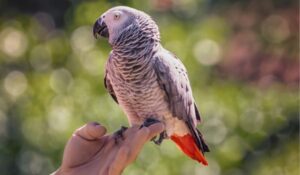
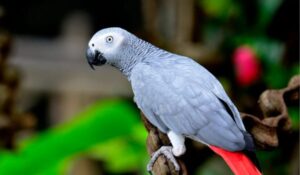
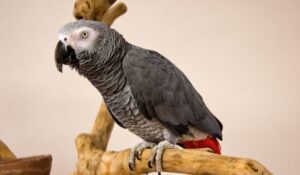






Pingback: How Much is a Macaw Parrot? Exploring the Costs and Care in the USA - skystylus.com
Pingback: Ultimate Guide to Restoring Your Bird's Appetite: Causes, Solutions, and Healthy Feeding Tips - skystylus.com